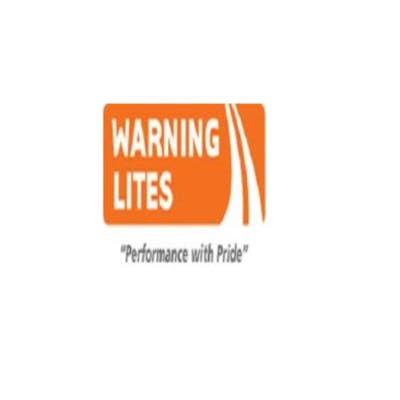Temporary Traffic Signs and Traffic Barricades: Safeguarding Roads and Directing Flow
Welcome to our blog post on the dynamic world of traffic management! From bustling city streets to construction zones, maintaining order and safety on the roads is crucial. In these ever-changing situations, temporary traffic signs and traffic barricades play a vital role in directing flow and safeguarding both drivers and pedestrians alike. So, let's dive into the fascinating realm of adaptable traffic management, exploring how these essential tools ensure smooth transportation while prioritizing public welfare. Whether you're a curious individual or a professional in the field, this article will shed light on the multifaceted applications of temporary traffic signs and barricades – from their strategic deployment to their impact on road safety. So buckle up as we navigate through this informative journey together!
Exploring the Role of Temporary Traffic Signs in Adaptable Traffic Management
Temporary traffic signs are like the unsung heroes of the road, quietly working behind the scenes to keep our transportation system running smoothly. These signs serve as valuable tools in adaptable traffic management, allowing authorities to effectively communicate important information and directions to drivers. Whether it's a detour due to construction or a temporary speed limit reduction, these signs play a crucial role in guiding motorists through unfamiliar territory.
One key aspect of temporary traffic signs is their flexibility. They can be easily installed and removed as needed, making them ideal for ever-changing situations such as road repairs or special events. With just a few simple adjustments, these signs can redirect traffic flow efficiently while minimizing disruptions.
Another important function of temporary traffic signs is their ability to enhance safety on the roads. By providing clear instructions and warnings about potential hazards ahead, they help reduce accidents and ensure that drivers are well-informed about any upcoming changes or challenges they may encounter.
Moreover, these signs also contribute to maintaining order during large-scale events or emergencies. Whether it's directing vehicles towards designated parking areas or creating alternate routes during an evacuation, temporary traffic signage plays a vital role in managing traffic congestion effectively.
In addition to serving practical purposes, temporary traffic signs also have aesthetic benefits. In many cases, these signage solutions can be customized with vibrant colors and eye-catching graphics that grab attention without compromising legibility. This not only enhances visibility but also adds an element of visual appeal to otherwise mundane stretches of road.
All in all, exploring the role of temporary traffic signs reveals their indispensable value in adaptable traffic management systems. From safeguarding roads and directing flow efficiently to enhancing safety measures – these unassuming signposts truly make a significant impact on our daily commutes and overall transportation experience!
The Multifaceted Applications of Traffic Barricades in Diverse Traffic Scenarios
Traffic barricades play a crucial role in managing traffic and ensuring the safety of motorists and pedestrians in diverse traffic scenarios. These versatile devices are designed to create physical barriers that guide vehicles, redirect traffic flow, and prevent unauthorized access to designated areas.
In construction zones, traffic barricades are used to separate work areas from the main road, protecting workers and alerting drivers to potential hazards ahead. By strategically placing these barricades along the route, construction crews can efficiently carry out their tasks while minimizing disruption to regular traffic.
During special events or parades, temporary traffic barricades help organizers control crowd movement and ensure public safety. By creating designated pedestrian pathways or cordoning off specific areas, these barriers effectively manage large crowds by directing foot traffic away from vehicular routes.
In emergency situations such as accidents or natural disasters, traffic barricades can be deployed quickly to redirect vehicles away from hazardous areas. Whether it's blocking off a collapsed bridge or detouring cars around a flooded street, these barriers provide clear guidance for drivers and help maintain order during chaotic times.
Traffic barricades also serve an important function in maintaining road infrastructure. In ongoing road maintenance projects where lanes need to be closed temporarily for repairs or resurfacing work, these devices act as visual cues for motorists by indicating lane closures well in advance.
The Strategic Deployment of Temporary Traffic Signs for Public Welfare
Temporary traffic signs play a vital role in ensuring the safety and efficiency of our roads. From construction zones to special events, these signs are essential tools that help direct traffic flow and safeguard both motorists and pedestrians. Combined with traffic barricades, they create a comprehensive system that adapts to diverse traffic scenarios.
By strategically deploying temporary traffic signs, authorities can effectively manage roadways while prioritizing public welfare. Whether it's directing drivers away from hazardous areas or guiding them through detours, these signs serve as beacons of information, allowing individuals to make informed decisions about their routes.
In times of emergencies or natural disasters when regular routes might be disrupted or impassable, temporary traffic signs become even more crucial. They provide clear instructions on alternative routes and ensure that emergency responders can navigate quickly and safely through affected areas.
Furthermore, temporary traffic signs are instrumental in maintaining order during large-scale events such as concerts or parades. By designating specific parking areas or closing off certain roads temporarily, organizers can prevent congestion and ensure smooth access for attendees. This not only enhances the overall experience but also minimizes potential risks associated with overcrowding.
Moreover; innovative technologies like solar-powered LED lights have been integrated into temporary sign designs making them visible even during nighttime conditions.
This adds an extra layer of safety by increasing visibility for all road users regardless of time constraints.
It is worth mentioning that the successful deployment of temporary traffic signs depends on proper planning and execution. Authorities must consider factors such as location, duration, required signage types, and appropriate placement to achieve maximum effectiveness.
Together with trained personnel overseeing their implementation, the strategic deployment ensures optimal impact on managing flow efficiently while ensuring public welfare remains paramount.
In conclusion, the use of temporary traffic signs alongside well-placed barricades plays an integral role in safeguarding our roads.
